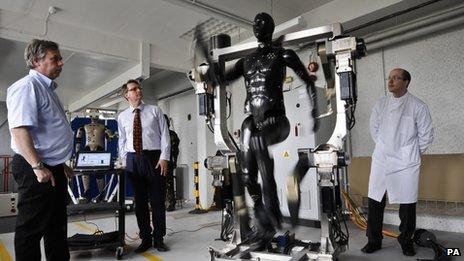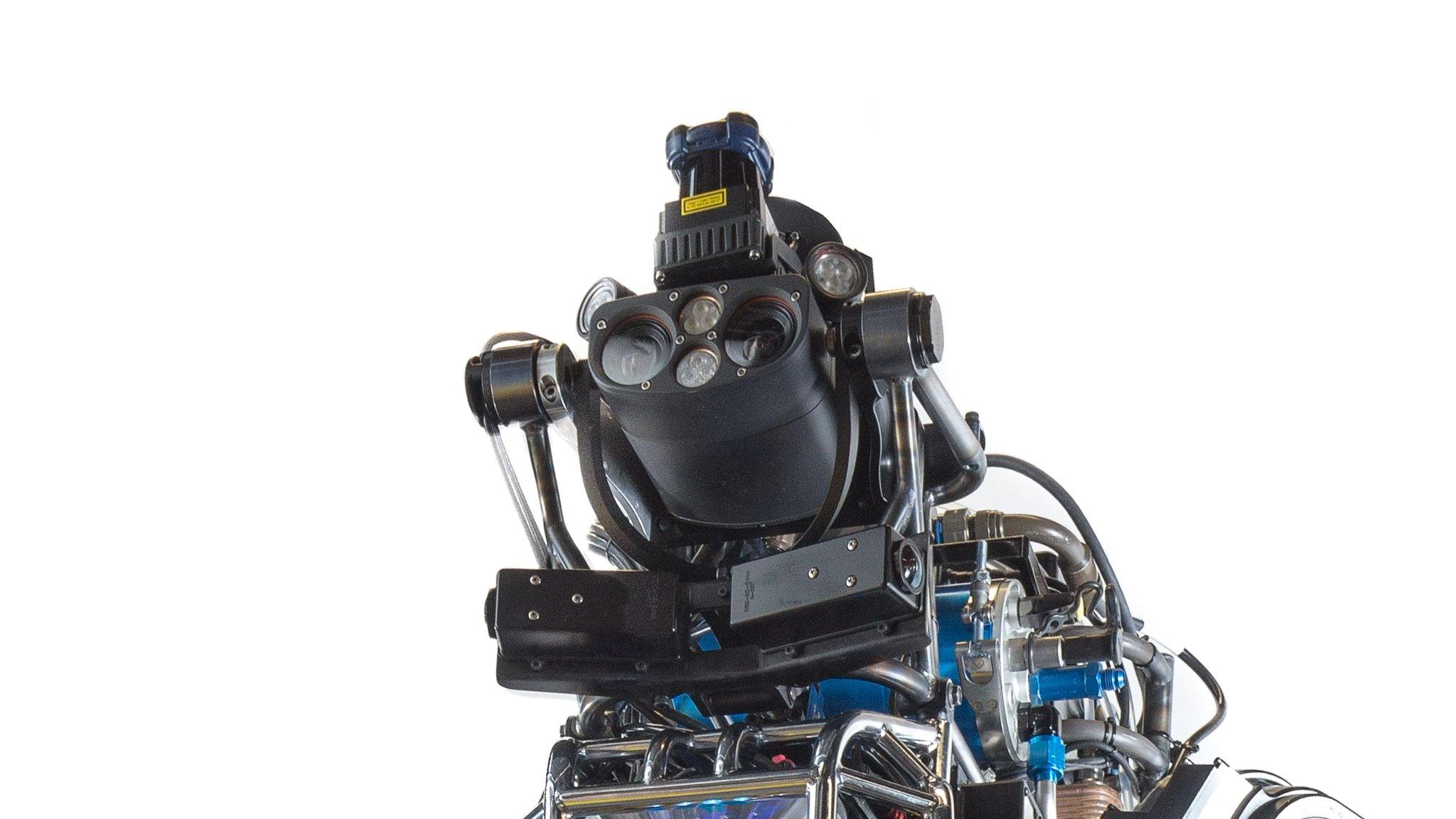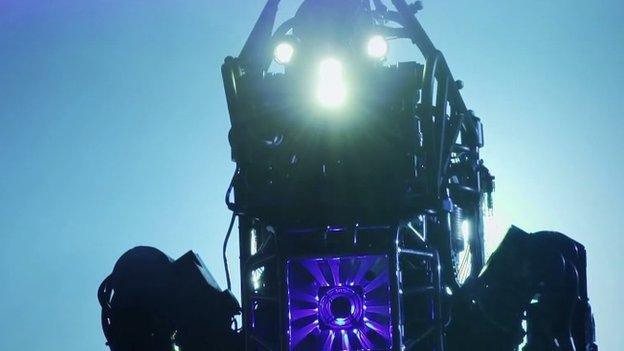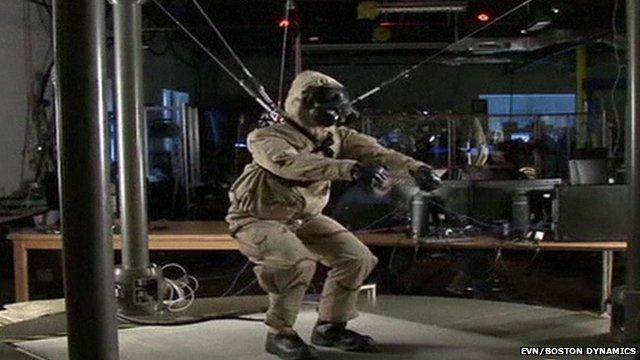Robot mannequin to test armed forces' protective suits
- Published

The Porton Man has been made for use in the Defence Science and Technology Laboratory
A robotic mannequin that can run, sit and even mimic the movement of a soldier has been unveiled by the Ministry of Defence.
The £1.1m robot - developed using Formula 1 technology - will test protective suits and equipment.
The "Porton Man" has more than 100 sensors over its body to record data during tests.
Developers said it would help them create the next generation of protective equipment.
Dr Colin Willis: "It is a complex piece of machinery"
Unique
The Ministry of Defence, external said the new animatronic mannequin was unique to the UK.
It has been made for the Defence Science and Technology Laboratory (DSTL) - where clothing systems for soldiers are tested against chemical warfare agents.
The robot can raise its arms to imitate signals given by soldiers and can also march and kneel.
Previous mannequins were brought into use in the late 1990s and helped to influence the design of the chemical, biological and radiological suits currently used by the armed forces.
But the latest has a better movement range than previous models, including of its head.

The Porton Man can walk, march and run
It is hoped tests involving the latest mannequins will help produce a new, lighter protective suit for the miltary.
Dr Colin Willis, principal for the Chemical Biological Protection Group at the DSTL, said testers would be able to put "more realistic stresses" on the robot to achieve better results.
"It's really the materials and the fact he will be exposed to chemical warfare agents, so the material design has been very important obviously," Dr Willis told the BBC's Today programme.
"It sounds simple, but when you see the mannequin and the computer controls, it really is a complex piece of machinery."
Dr Willis said the goal with the robot, which he described as "much more realistic" than a 10-year-old mannequin that had been in use, was to create suits that strike a balance between protection and physiological burden.
F1 technology
The Porton Man - named after the location of the DSTL in Porton Down, Wiltshire - was made by i-bodi, a technology firm based in Buckingham.
The company also makes animatronics and robotics for film and television.
Its chief executive Jez Gibson-Harris said the mannequin was based on data collected from 2,500 soldiers and that the company had used similar techniques to those seen in Formula 1 cars.
He said: "Our brief was to produce a lightweight robotic mannequin that had a wide range of movement and was easy to handle.
"Of course there were a number of challenges associated with this and one way we looked to tackle these challenges was through the use of Formula 1 technology.
"Using the same concepts as those used in racing cars, we were able to produce very light but highly durable carbon composite body parts for the mannequin."
More realistic
Jaime Cummins, from DSTL's chemical and biological physical protection group, said the new Porton Man is much lighter than its predecessor at 14kg (30lb), rather than 80kg (176lb).
That will make it easier to move the model in and out of its test chamber.
He said: "It's a better, more realistic test system, and we are now in a better position to design and develop the next generation of CB (chemical and biological) protective suit equipment."
Philip Dunne, minister for defence equipment, support and technology, said: "This technology, designed by a British company is enabling the UK to lead the way in this important testing.
"Increased investment in science and technology by the MoD (Ministry of Defence) is not only enabling battle-winning and life-saving equipment to be developed but also helping innovative companies like i-bodi Technology to develop cutting edge capability."
- Published12 July 2013

- Published20 December 2013

- Published9 April 2013
